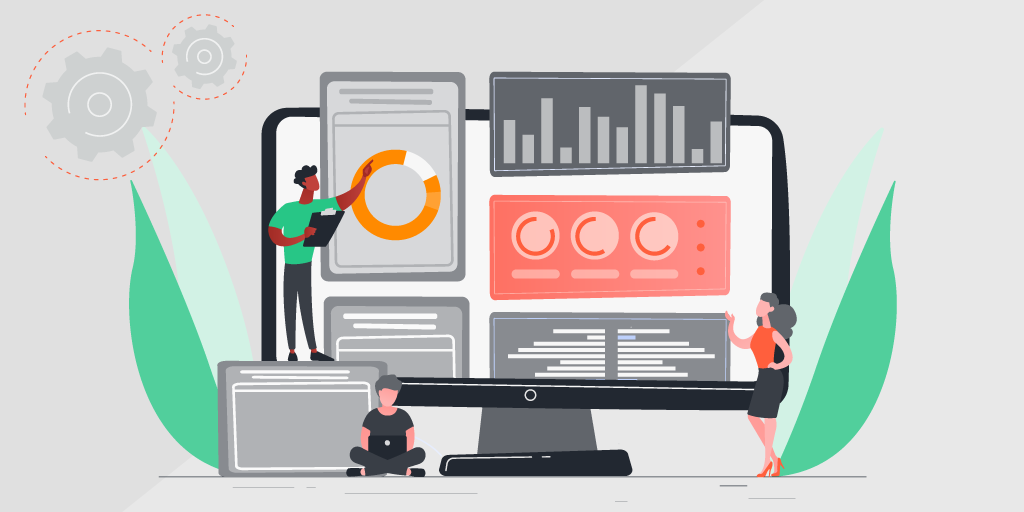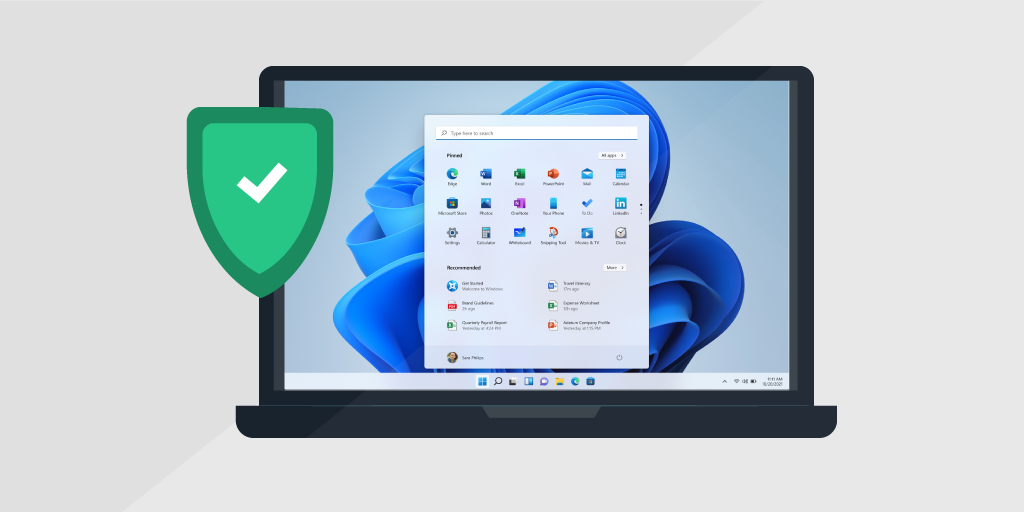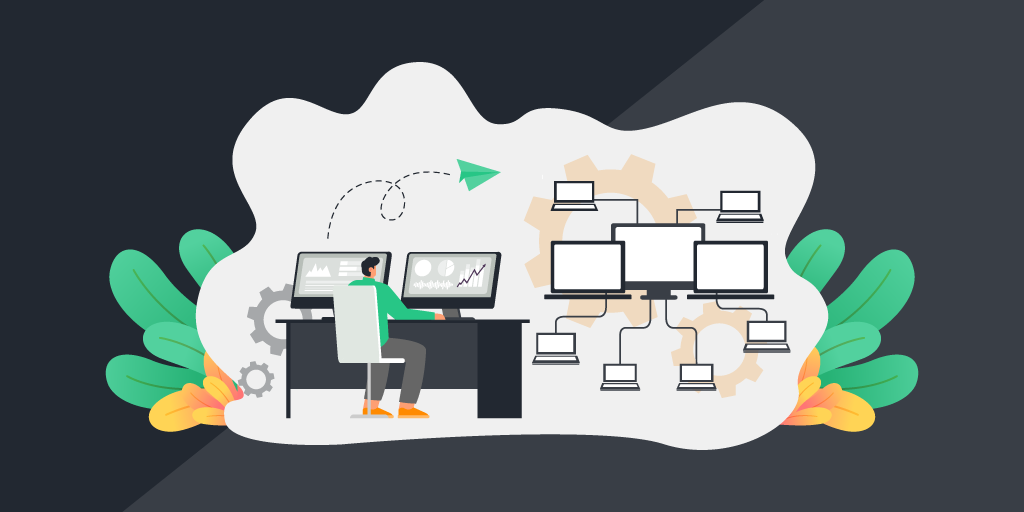
IT Asset Management – or ITAM for short – is the process of discovering, accounting for and managing all of the technology assets that comprise your entire IT estate, including assets that are on and off premises, and in the cloud. This includes a wide range of software, hardware and virtual assets such as servers, routers, gateways, desktop and laptop computers, printers, operational technology (OT), internet-connected devices (IoT), and software running on those devices. Today, in the hybrid workplace, IT asset inventory management may also include personal devices such as smartphones and tablets that employees use to connect to the corporate network and access company resources.
In addition to the process of creating a complete and accurate inventory of all your technology assets, ITAM provides processes for deploying, maintaining, upgrading and disposing of IT assets, as well as tracking and monitoring assets usage throughout their lifecycle.
What is the purpose of ITAM?
The purpose of ITAM is to plan and manage the full lifecycle of all IT assets. Done well, ITAM helps you to ensure that all of your technology assets are supported, up to date and managed properly. This helps an organization maximize value, optimize costs, reduce risk and accelerate and improve decision making.
With proper ITAM processes and IT management software in place, you can detect and address potential hardware and software vulnerabilities and ensure the right upgrades are deployed. You can identify shadow IT and retire idle devices, and stop wasting money on devices you don’t use. You can also bolster cybersecurity with the ability to detect and isolate rogue devices that may contain malware or are attempting to infiltrate the corporate network for malicious purposes. IT asset management simplifies compliance, streamlines audits, and accelerates incident investigations, because you always have a complete and accurate IT asset inventory at your fingertips.
Why is ITAM important?

Manage the expanding IT estate
Gartner reported that 70% of organizations don’t have a complete picture of what assets their organization owns. Adding to the problem, a number of trends are resulting in the proliferation of assets across the enterprise, including digital transformation, the hybrid workplace and an increased need for mobility. As employees continue to access corporate resources remotely and bring their own devices to work, the pressure is on IT departments to manage IT sprawl and ensure cybersecurity across an increasingly distributed infrastructure. ITAM is essential for reducing risk, managing costs and optimizing spend in the hybrid workplace.
Eliminate manual processes
Without proper ITAM processes asset management software in place, IT teams are saddled with time-consuming manual processes. IT asset inventory management on Excel spreadsheets is ineffective and error-prone – spreadsheets are obsolete almost as soon as they’re complete. Plus there’s no easy way to share IT asset data with other teams, resulting in wasteful, duplicate work.
Minimize risk
If a performance or security issue arises, IT teams who lack sufficient ITAM processes and technology must manually investigate the issue. Without computer inventory management across the technology estate, it’s much more difficult to determine the root cause of an issue or isolate the problem. In case of such an event, time is of the essence, and not having IT asset data at the ready can drastically slow down response times. This can lead to an interruption of business operations and lost productivity, or, worse yet, devastating damage and costs at the hands of cybercriminals. What’s more, without a comprehensive view of all the software and hardware assets across the organization, holistic analysis is impossible, which means actionable insights will be lacking.
Increase ROI
In addition to what can go wrong without ITAM, organizations who don’t implement effective ITAM processes and technology miss out on what can go right – namely, improved ROI. ITAM helps organizations capture asset data and determine how to drive business value. They can leverage the data to make smart purchasing decisions and optimize software licensing and support costs, eliminating waste and improving efficiencies. Plus, as new policies and regulatory requirements arise, ITAM can make compliance much easier and achievable.
What are the main types of IT Asset Management?
There are three different types of ITAM. Each type covers different types of assets:
- Hardware Asset Management: ITAM that focuses on hardware is for managing on- and off-premises devices, such as servers, routers, end-user devices and more. This may be extended to fixed asset management, such as printers, networking cabinets, cables and more.
- Software Asset Management: SAM involves keeping an inventory and managing all software assets across the organization. SAM enables IT teams to optimize licensing costs, track usage and ensure proper security policies are deployed.
- Cloud Asset Management: ITAM that focuses on cloud assets helps organizations manage various assets across Amazon, Microsoft, Google and other cloud service providers.
What are the benefits of ITAM?
There are numerous benefits to ITAM:
- A single source of truth for technology asset data can be leveraged across the organization, eliminating silos and ensuring everyone is working off the same, accurate dataset.
- Having one system of record enables holistic data analysis, enabling you to understand the TCO of your various assets and optimize your IT budget.
- Properly tracking and managing software licensing and usage minimizes licensing and support costs.
- Teams can quickly and more easily analyze and mitigate performance and security risks.
- A complete and accurate inventory of all technology assets makes it easier to identify potential security vulnerabilities, roll out updates and patches, and strengthen the company’s overall security posture.
- Compliance audits and incident investigations are quick and productive, reducing downtime and minimizing potential financial costs and reputational damage.
- ITAM supports ITIL processes with rapid access to accurate IT asset data, and increases agility by accelerating migrations, upgrades and other important changes to the IT infrastructure.
“Gartner reports that knowing the status of your technology assets at all times enables proactive management that reduces risk, lowering IT spend by up to 30%. Perhaps more importantly, it ensures employees have secure access to the updated, operational technology assets they need to be productive and effective.”
How do you do ITAM?
According to numerous IT governance frameworks, the first step to ITAM is creating a complete and accurate IT asset inventory. This must consist of granular data about every technology asset across your organization. Unfortunately, many asset management software tools that provide this functionality are particular to a specific use case, for example cybersecurity or helpdesk, and the information they collect can be incomplete. Worse yet, the data may overlap, resulting in duplication and inconsistencies. Since the breadth, depth and means of discovery may differ between solutions, it can be difficult to reconcile and normalize the data.
How Can IT Asset Management Help?
Implementing a dedicated IT asset management platform that discovers, recognizes and creates an inventory of your technology assets is the best way to approach ITAM. Why? Because with technology assets proliferating rapidly across the enterprise, attempting to manage IT assets manually is expensive, tedious and, in most cases, futile.
And IT asset management platform automates and accelerates IT asset management, and today’s advanced ITAM systems offer additional features such as IT asset management reporting and visualization tools that help organizations extract even more value from their IT asset data. With asset inventory software automating and optimizing ITAM, organizations can allocate more time and energy to revenue-generating tasks and innovation, and spend less time on manual tasks.
How do you choose ITAM software?
While there are numerous ITAM systems available on the market, it’s important to choose wisely. Below are some essential features to look for in an IT and network management software solution:
- Discovers all assets: For ITAM to be effective, you must have complete visibility across your entire IT estate. Make sure the solution you choose can discover all software and hardware assets, whether on premises, remote or in the cloud.
- Provides granular data: Just having the MAC and IP address isn’t enough – you need detailed data to make informed decisions about your technology assets. Look for a solution that provides not only the MAC or IP address, but the make and model of various devices, software versions and user information.
- Credential-free scanning and recognition: To ensure complete visibility, credential-free scanning and recognition is essential. This enables you to detect unknown and rogue devices – even those that only touch the network briefly – for a comprehensive picture of your IT estate.
- True asset intelligence: Your solution should be able to combine data from multiple data sources to enable holistic data analysis that delivers actionable insights.
- Easy to integrate: Due to the interconnected nature of business today, API-based integration is critical. Tapping into your single source of truth for technology asset data enables you to leverage that data for any IT use case or scenario, from cybersecurity to cloud migrations, service desk, network management, improving CMDB data and more.
- Automation and workflows: Of course, without automation, you’re still wasting time and money. Make sure the solution you choose works behind the scenes automatically and provides automated workflows to streamline your ITAM processes and procedures.
- Reporting and analytics: These features are critical to helping you make sense of and act on your IT asset data, and share results across the organizations to drive more business value.
ITAM Best Practices
If you’re just getting started with an ITAM program in your organization – or if you’re revising your ITAM strategy – here are some important best practices:
- Get stakeholder buy-in. It’s helpful to have an executive sponsor to support your efforts and the organizational changes that may be required to implement an ITAM program.
- Choose the right tool. See the section above for what to look for in an ITAM solution.
- Start with a free trial. Many leading ITAM solutions offer a free trial so you can get your feet wet before you commit to buy. This is a perfect opportunity to familiarize yourself with the IT asset management software and ensure it meets all your requirements.
- Document everything. Clearly define and document your ITAM practices and procedures. Make sure your tool vendor provides detailed, accessible documentation that your team can reference.
- Set clear expectations. Get your entire ITAM team on-board with your tool selection and aligned with the processes and procedures you’ve defined.
- Evaluate possible integrations. Talk to stakeholders across your IT department about how they may want to put the IT asset data you collect to use. Start thinking about what integrations would deliver the most business value, for example integrations with your ITSM or CMDB tools.
- Gather feedback and iterate to improve. It’s rare that a new process is right the first time. Once you implement your ITAM strategy and solution, ask for input from users across teams, and make adjustments where necessary.
Master ITAM with Lansweeper
Lansweeper’s industry-leading IT asset management platform helps thousands of businesses understand, manage and protect their IT infrastructure. Learn how Lansweeper can simplify ITAM in your organization and provide actionable insights to help you minimize risk, improve productivity, and optimize spend across the IT estate. Try Lansweeper for free today.


